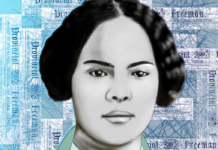Nationally, we have been stressed about returning to school, and with good reason. It is critical that we do everything we can to keep our children, educators, and families safe. In New Orleans, amidst a pandemic and an active hurricane season, our district and our schools are taking important steps to do so.
But, as buildings begin to reopen for the option of in-person school, we have an opportunity to make education better than before—not just here, but nationwide.
New Orleans is well-positioned to do so. We have experience rebuilding a school system after a crisis. Hurricane Katrina physically damaged, and in some cases destroyed our school buildings and stole valuable learning time.
It took hard work and struggle, and the road has not always been smooth—but we saw progress. In the years that followed, students made academic gains. But, when I think about some of the strongest innovation that occurred when we returned to school, I often recall the support educators provided to students and families, especially with respect to trauma.
Rethinking School Culture After Hurricane Katrina
When our students came back, they struggled to adjust socially and emotionally. This made sense. They’d witnessed horrors. They’d been displaced.
So, how did leaders reset school culture? How did we make warm spaces out of devastated ones? This called for creativity and empathy. The best schools started building trauma-informed environments before that term had even entered the popular conversation.
A few years after the storm, I was working in school-level leadership position at a public elementary school. Our team was largely veteran educators, but they brought new ideas to their long-held experience. This team worked together to implement a framework for weekly meetings; checked in on the “whole child” by looking at each student’s academic, social, behavioral, and emotional progress, as well as their attendance. A heavy lift that took some time to develop. I had to work to get buy-in from each member of the team, but in the end, it paid off. We were calling on parents, working with psychologists, social workers, and psychiatrists, and engaging our full community.
By constructing a system that allowed us to track progress, our school culture was stronger than before and our team was better equipped than ever to take care of each child’s individual needs.
This innovation wasn’t flashy, and it wasn’t easy, but it made a difference for students and our overall school growth.
Innovating Through Crisis: A New School Model
As educators, if we are unable to put large numbers of children in our classrooms, let’s reconsider walls altogether. Let’s rethink instructional approaches that require depositing students inside a school building for eight or more hours a day. Some of those hours could include sophisticated internships and mentorships that present real-world problems to solve, a space for creativity, and experiences that will better equip students for the future.
The classroom can be anywhere that allows for exploration: robotics studios, chemistry and simulation labs, entrepreneurs’ offices, college libraries, or the kitchens of world-class chefs. Students can learn on the streets of their city while protesting injustice, examining a history of redlining, or exploring public art up-close.
Some of these learning opportunities can be available to students now and others will have to wait until COVID-19 infection rates go down. But, even once our schools are fully able to operate in person, educators can continue to think out-of-the-box.
School leaders should be able to build school days that work for their learning communities, including flexible, non-traditional scheduling, when necessary. This would allow leaders to make important decisions around instruction, like selecting the highest quality and most appropriate curriculum. In terms of funding and financial autonomy, we can give more site-based management power to leaders, with less external bureaucracy.
Let’s begin to embrace opportunities for a natural transition between all-virtual environments, hybrid ones (which blend virtual and in-person learning), and fully in-person classes. Practically speaking, this would also allow for a more seamless transition if we experience rolling closures due to COVID outbreaks.
Building systems to manage this will not be easy, but now is the time to begin. COVID may not be the only major crisis or pandemic that we face in our lifetimes. This moment has taught us that innovation must be a constant, and we must all be ready for change. It is clear that a top-down, traditional approach to educating our children will not be enough. So, through these tragic times, we must commit to constant, creative improvement—we must definitely listen to students, teachers, and families, and let that continue to shape the next chapter in education.










